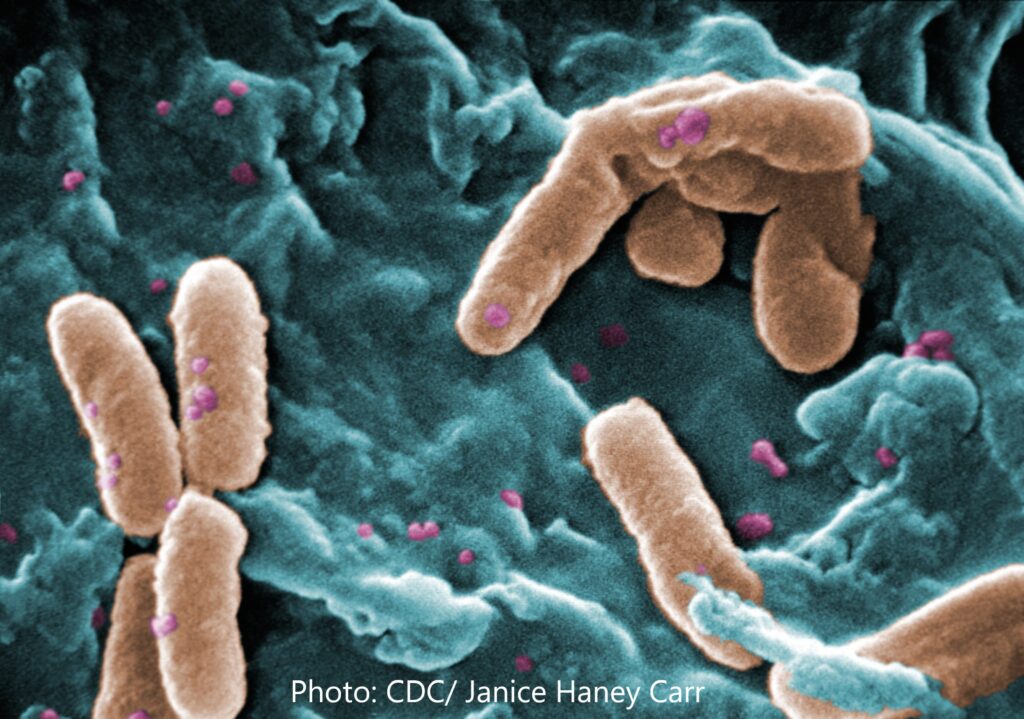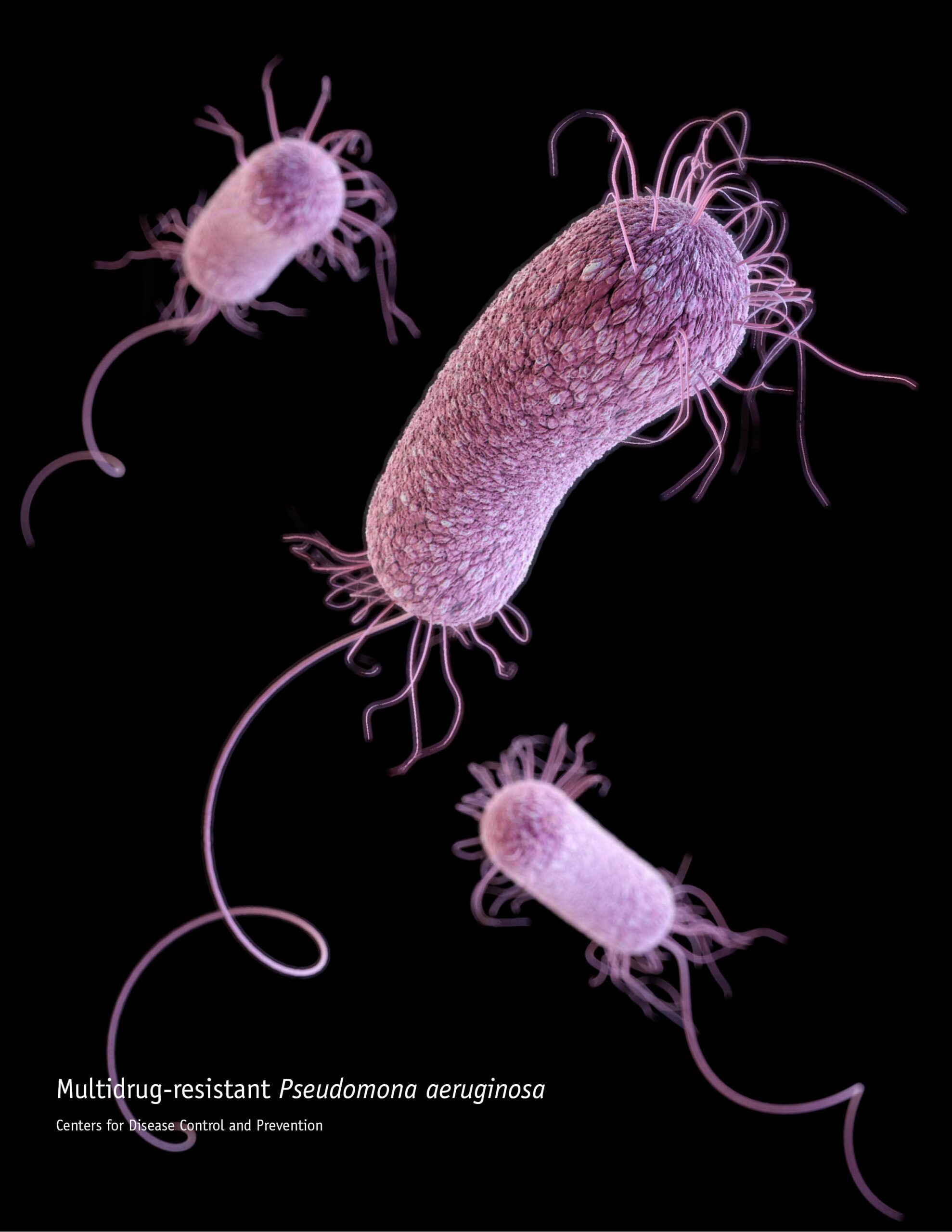Water is essential for life, but it can also harbor hidden dangers in the form of waterborne infectious diseases. In the United States, millions of cases of domestically acquired waterborne illnesses occur each year, leading to a significant burden on public health.
Listen Here ⬆️
A groundbreaking study titled “Estimating Waterborne Infectious Disease Burden by Exposure Route, United States, 2014,” shed light on the alarming scale of this issue and Swimming Pool Diseases. This article explores the key findings of the study and highlights expert insights shared in a special 2-part episode of the Talking Pools Podcast on July 28, 2023, featuring microbial physiologist Roy Vore and chemist Jenn Huang.

This digitally-colorized version of PHIL 232 depicts a scanning electron microscopic (SEM) image of a number of rod-shaped, Gram-negative, Pseudomonas aeruginosa bacteria. Note the numerous, and significantly smaller, spheroid, purple-colored cocci bacteria also in this field of view.
The Alarming Statistics of Swimming Pool Diseases
The study’s staggering statistics reveal that in 2014 alone, more than 7.15 million cases of domestically acquired waterborne infections occurred in the USA. Tragically, these infections resulted in 120,000 hospitalizations and 6,600 deaths. Such figures underscore the critical need to address waterborne diseases effectively.
Similar Article: Ask Jenn & Roy!
Understanding Exposure Routes
One of the crucial aspects of the study was the breakdown of disease incidence according to different exposure routes: recreational water, drinking water, and non-recreational nondrinking (NRND) water. Recreational water, including pools, hot tubs, and natural bodies of water, accounted for approximately 5.61 million illnesses, making it the leading exposure route.
Drinking water, sourced from public systems, private wells, or commercial bottles, was responsible for around 1.13 million illnesses. NRND water, used for non-recreational purposes like agriculture or medical treatment, contributed to approximately 407,000 cases of waterborne diseases. Understanding these exposure routes is vital for directing prevention efforts and allocating resources effectively.
Similar Article NATURAL SWIMMING POOLS
The Role of Biofilms
The study also emphasized the significance of biofilms in waterborne infections. Biofilms are thin layers of microorganisms that can form on various surfaces in water systems, such as pipes and filters. Pathogens within biofilms are challenging to eradicate and can be a major source of infections.
Experts’ Insights
In the Talking Pools Podcast episode, microbial physiologist Roy Vore and chemist Jenn Huang shared their valuable insights. They stressed the need for water management programs to combat biofilm-associated pathogen growth, especially in recreational water venues. Moreover, public health initiatives are crucial for preventing biofilm-related diseases and safeguarding the well-being of communities.
Conclusion
The study “Estimating Waterborne Infectious Disease Burden by Exposure Route, United States, 2014,” serves as a wake-up call to the nation’s water safety and management systems. The findings emphasize the pressing need for targeted preventive measures, along with collaborative efforts between experts, policymakers, and the public. By understanding the disease burden across different exposure routes and tackling the challenges posed by biofilms, we can work towards a safer and healthier water environment for all. Water is a precious resource, and it is our responsibility to protect it from becoming a hidden threat to public health.






